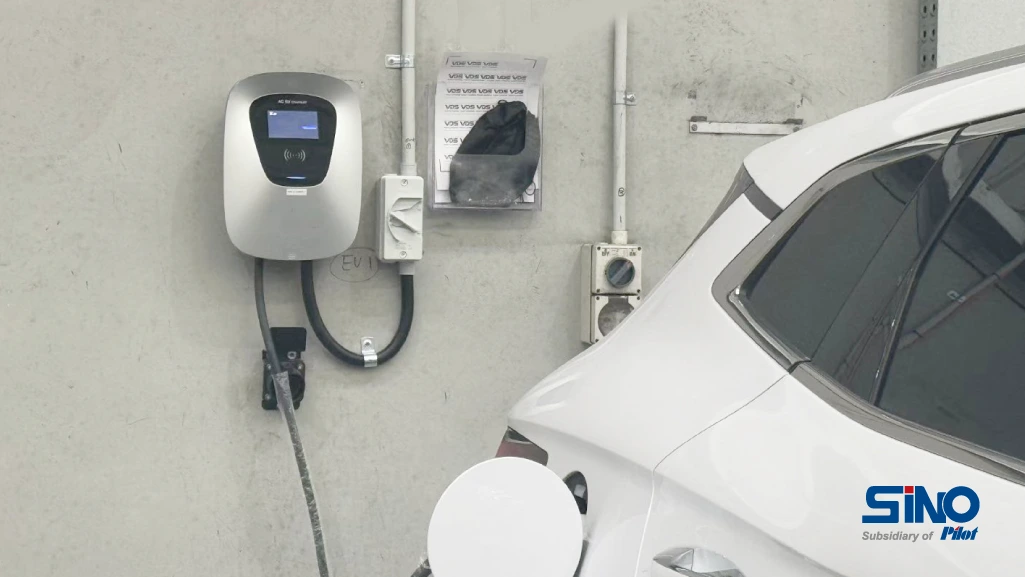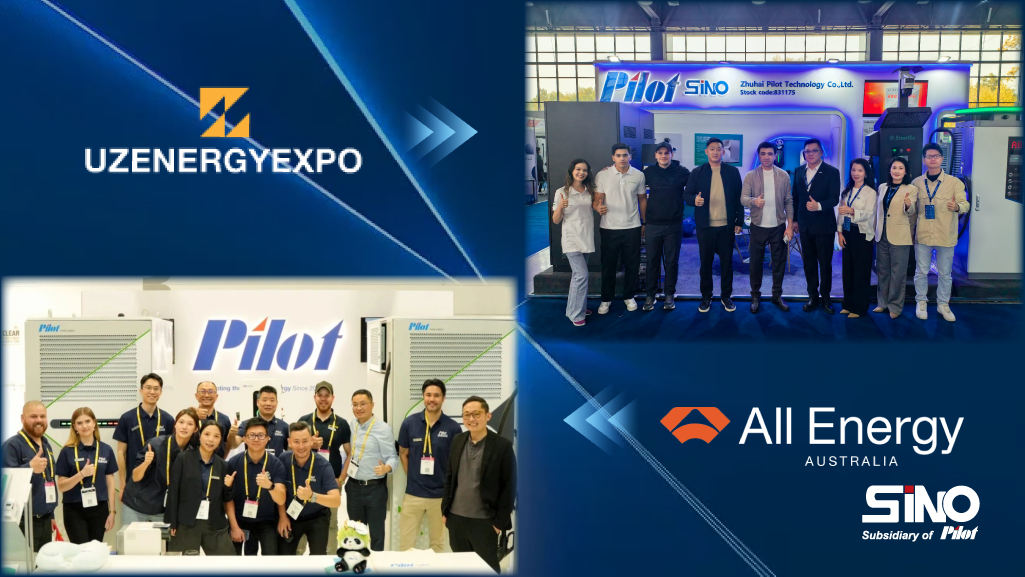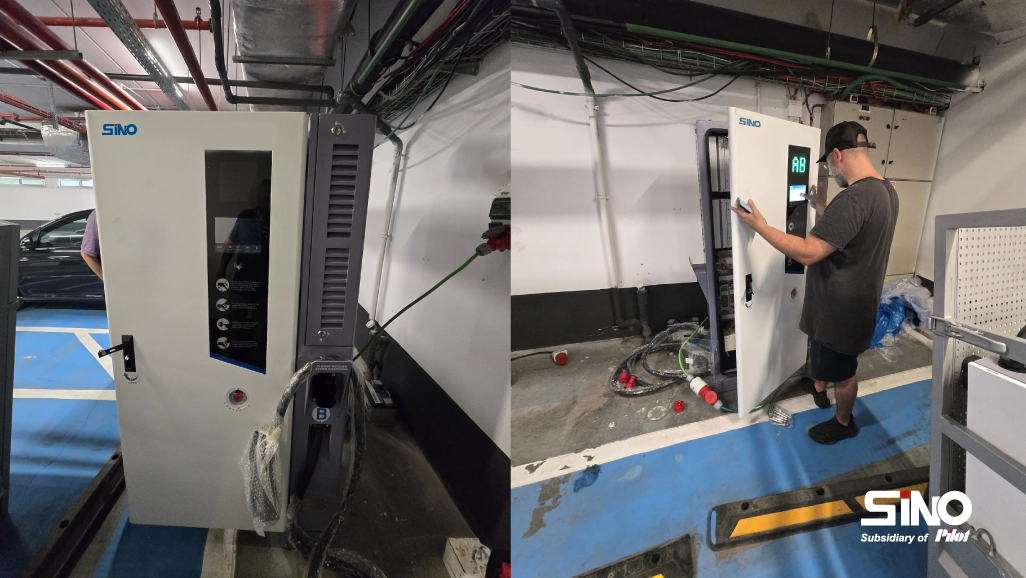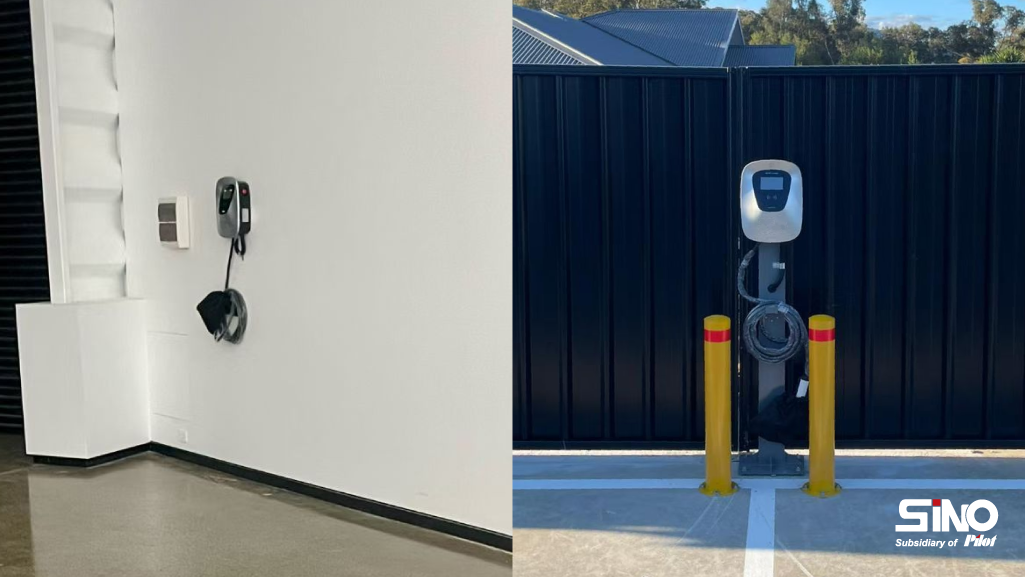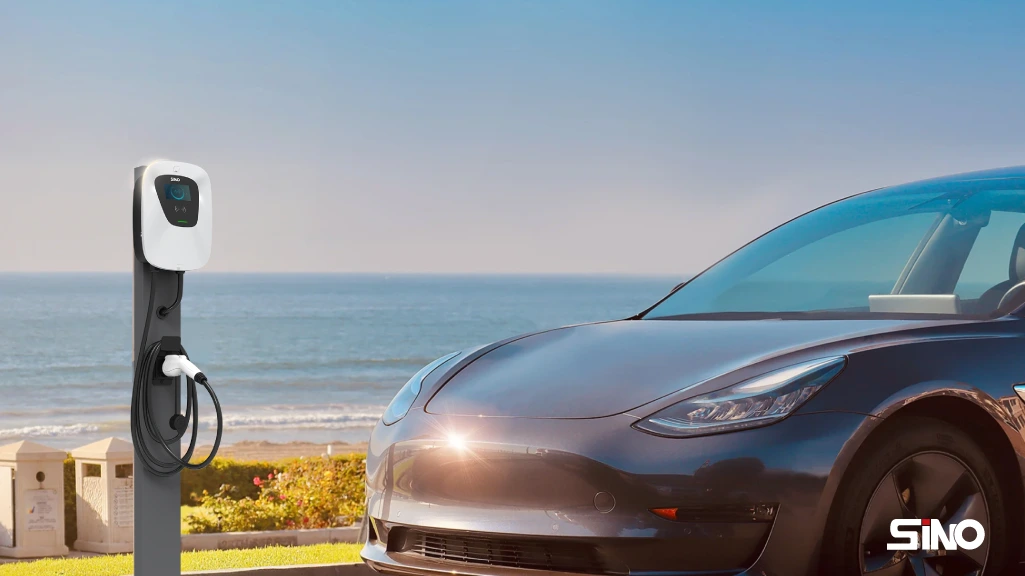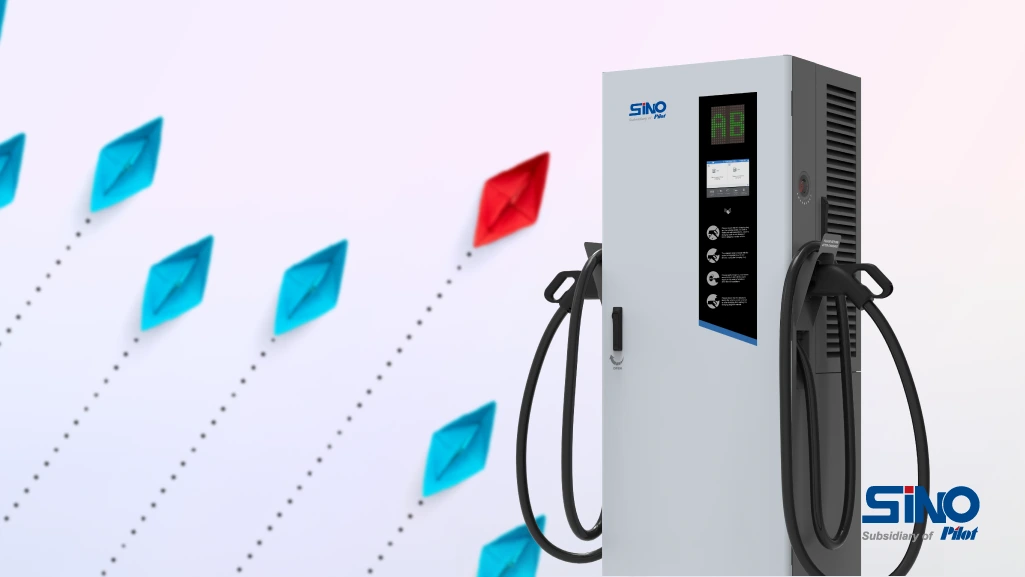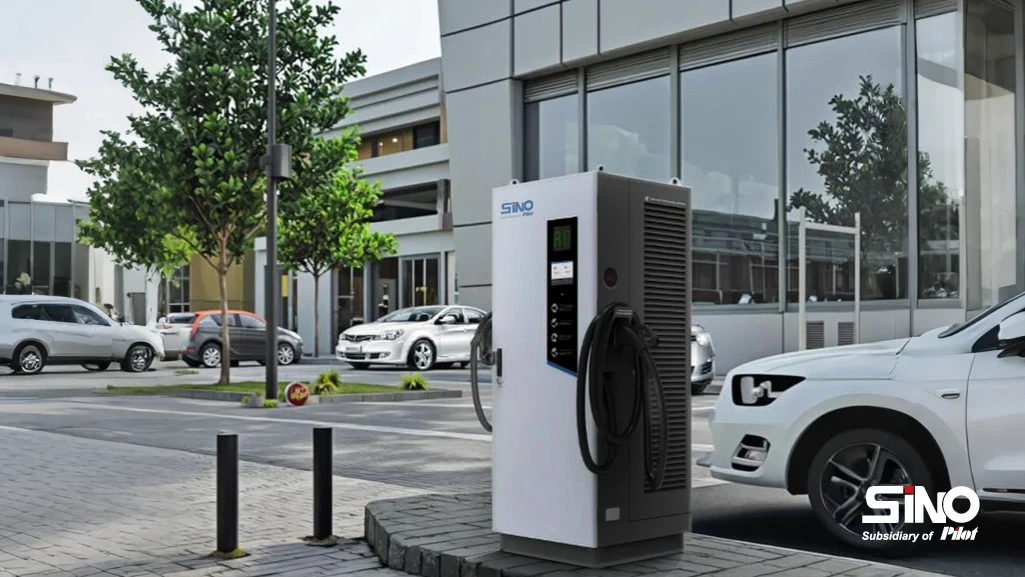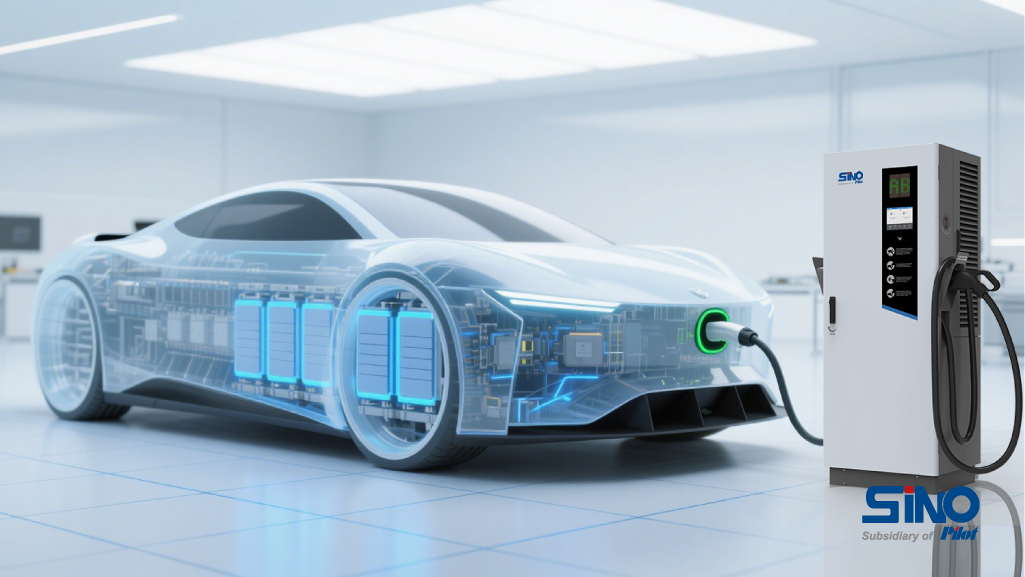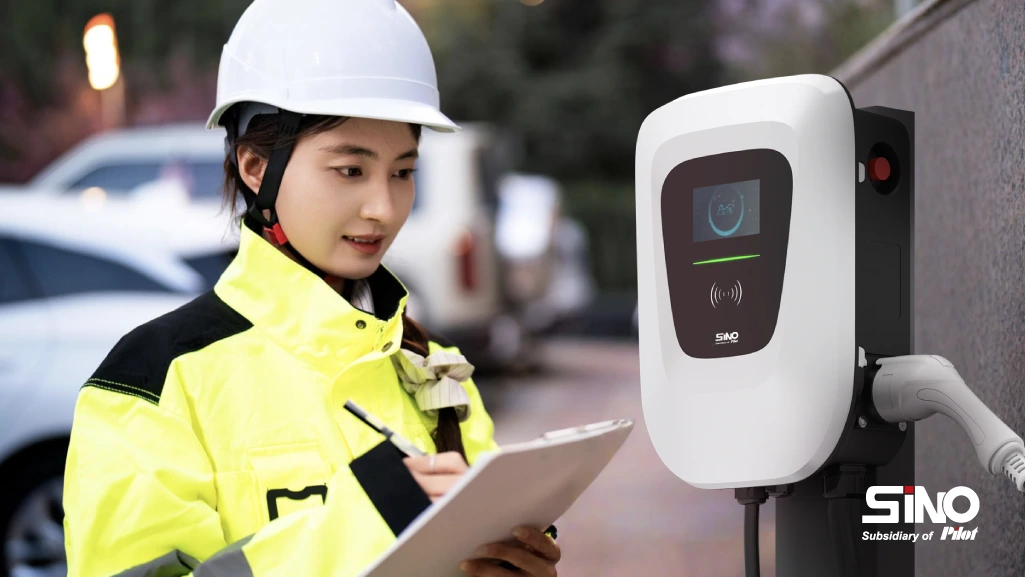There are two types of fast charging technology for electric vehicles. These are AC charging and DC charging. AC fast charging consists of lower power levels and it uses the vehicle’s own charger to convert AC to DC for battery storage. This makes it slower as compared to DC fast charging. DC charging consists of DC being delivered directly to the battery which allows for faster charging times.
Fast AC Charging
AC stands for Alternating Current. Fast AC charging is mainly designed for home use or office use. AC charging relies on your vehicle’s own charger to convert AC power from the electrical grid to DC power that its batteries can store. Fast AC charging ranges from 7 kW to 22 kW. This allows drivers to charge their vehicles overnight or during work hours, which is enough for their daily use.

1. Availability
AC charging stations are more commonly found than DC charging stations. This is because they are easier and cheaper to install than their DC counterparts. The main reason is that they use existing electrical infrastructures that are widely available. As a result, EV owners can conveniently find charging stations. These are located in public parking spaces, shopping centers, and workplaces.
2. Cost-Effectiveness
AC charging stations are cheaper to install and maintain as compared to DC charging stations. They have low power requirements, which allows them to use regular electrical sockets. This makes them more affordable and easier to install as compared to DC. Electric vehicle owners prefer AC as it costs them less per charge. This is especially true when they have to charge their vehicles overnight at home.
3. Compatibility
Almost all electric vehicles can accept an AC power supply. This makes AC chargers universally compatible. Moreover, this compatibility allows EV owners to charge their vehicles at almost any EV charging point. These charging points include both public and private charging stations worldwide. The best part about this is that EV owners don’t have to worry about finding a compatible station.
4. Safety
AC chargers are generally safer than DC chargers. This is because they work at lower power levels. Doing this can reduce the risks associated with high-voltage DC charging stations. This makes them safer to install in residential areas or other private zones. It is important to note that the lower power output minimizes the wear and tear on your vehicle’s battery. This can extend its life span.
Fast DC Charging
DC stands for Direct Current. Fast DC charging is widely popular for quickly recharging your vehicle’s battery when you are short on time. Unlike AC charging, DC EV charging stations directly deliver DC to your vehicle’s battery at high outputs. This ranges from 50 kW to 350 kW or more. The best part about DC charging is that it reduces charging times. EV drivers can easily charge their vehicles within minutes.
1. Suitable for Commercial Use
DC fast charging stations are the most useful when used in a commercial setting. This includes public charging networks, fleet operations, and businesses that rely on electric vehicles. DC can rapidly charge electric vehicles with almost no downtime. This ensures that they are used at maximum capacity. Although they are pricier than AC, most EV drivers find this to be a good investment.
2. Long-Distance Travel
DC fast charging is most beneficial for EV drivers who are looking to go on a long-distance journey. This is because DC charging allows for EV drivers to quickly recharge during these trips. DC charging stations allow EVs to be more efficient during long journeys without having to waste hours on charging. Most EV batteries can get 80% charged in under an hour, which is significantly efficient.
3. High Efficiency
DC fast chargers are highly efficient as they deliver power directly to your electric vehicle’s power supply. This means that there is less energy lost during the conversion process as compared to AC charging. The efficiency of DC chargers not only speeds up the charging process but also contributes to lower energy costs per charge. This is why EV drivers prefer DC over AC charging in most cases.
4. Scalability
Electric vehicles are growing in popularity every day. As a result, the scalability of DC fast charging is very important. The best thing about DC stations is that they can charge multiple vehicles at the same time. They can even be upgraded to provide higher power outputs as technologies advance. This makes DC fast charging the best solution for urban areas and even commercial fleets.
Fast AC vs. Fast DC Charging
| Feature | Fast AC Charging | Fast DC Charging |
| Power Output | Typically ranges from 7 kW to 22 kW | Ranges from 50 kW to 350 kW or more |
| Charging Time | Slower, often requiring several hours for a full charge | Much faster, can charge up to 80% in 20-30 minutes |
| Installation Cost | Lower, due to simpler technology and infrastructure | Higher, involves more complex equipment and infrastructure |
| Typical Use Cases | Home and office use, suitable for overnight charging | Commercial use, highway rest stops, suitable for rapid recharging during travel |
| Availability | More widespread in residential and office locations | Increasingly available at public stations and for fleets |
| Cost per Charge | Generally lower due to slower charging at lower rates | Potentially higher due to faster charging rates |
| Compatibility | Compatible with all EVs | Compatible with EVs equipped for DC fast charging |
| Safety | Safer with lower power outputs, minimal high-voltage exposure | Involves high-voltage components, requiring more stringent safety measures |
Choose the Right Solution
When deciding between AC fast charging vs DC fast charging solutions, it is important to consider your environment. Different environments have specific needs and requirements. These needs may best be met with either DC or AC charging. Here is a guide to choosing the right charging solution:
Residential Use

In most residential areas, electric vehicles are parked overnight for extended periods of days. As a result, a fast AC charging solution is more than enough for this area. The PEVC2201E Business AC EV Charger 3kW – 22kW is an excellent choice for home use. It offers a range of power outputs that are suitable for different electrical systems. This ensures that your EV is fully charged every morning.
Commercial Use
In most commercial environments such as offices, multiple vehicles need to be managed. As a result, fast AC charging solutions are the most efficient in this scenario. The PEVC2201E Business AC EV Charger 3kW – 22kW is also the most recommended solution for these settings. It provides a cost-effective solution for businesses that require vehicles to be ready over a standard workday.
Public Use
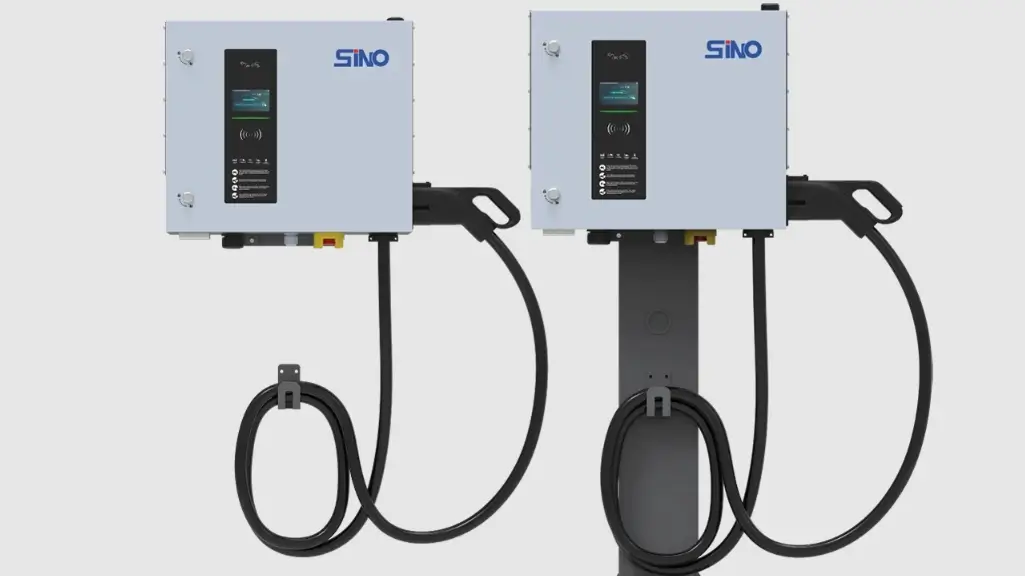
Public charging stations benefit significantly from fast DC charging. This is especially true along highways or in urban centers where people often need to quickly top up their vehicles. The PEVC3401E DC EV Charger 30kW is the best for these scenarios. It delivers high power that can charge EVs to 80% in as little as 30 minutes. This makes it perfect for short-stop situations and quick turnaround situations.
Long-Distance Travel Stops
For highway rest stops and service areas, the PEVC3401E DC EV Charger 30kW stands out as the best choice. Fast DC charging stations are important for supporting long-distance EV travel. This is because they enable drivers to quickly recharge within an hour. EV drivers significantly benefit from this as it minimizes the duration of stops during lengthy trips. This saves them both time and energy.
Conclusion
Choosing the right EV charging solution depends on the specific requirements of the environment. Fast AC chargers are ideal for residential areas and some commercial settings. This is because of their compatibility and cost-effectiveness. Fast AC chargers are ideal for public and high-traffic areas. This is because they have the ability to charge rapidly. It is important to understand these differences in order to best meet your needs as an EV owner.
FAQ
1. Why is DC charging faster than AC?
DC charging is faster because it delivers power directly to the electric vehicle’s battery without needing conversion. AC chargers supply power that the vehicle’s onboard charger must convert from AC to DC, which adds time to the charging process. DC chargers handle the conversion externally at much higher power levels, enabling quicker charge times.
2. Can any electric vehicle use a DC fast charger?
Not all electric vehicles are equipped for DC fast charging. While most new EV models support DC fast charging, some older or entry-level models may only be compatible with AC charging. It’s essential to check the vehicle’s specifications to ensure compatibility with DC fast chargers.
3. Are AC chargers safe to install at home?
Yes, AC chargers are safe to install at home as long as they are installed by a qualified electrician and comply with local electrical codes and standards. AC chargers operate at lower power outputs than DC chargers, which also helps minimize safety risks.
4. How do I choose between an AC charger and a DC charger for my business?
The choice depends on your business needs. If your business involves fleet vehicles that need quick turnaround times, a DC fast charger might be more suitable. However, if the vehicles can be charged overnight or throughout a workday, AC chargers may be more cost-effective and sufficient.
5. What are the long-term costs associated with fast AC and DC charging?
Fast AC charging typically involves lower upfront installation and equipment costs, leading to lower long-term expenses. However, fast DC charging, despite its higher initial costs, can offer reduced operational costs per charge in high-use public settings due to its speed and efficiency, which might be more economically viable in the long run for busy charging stations.
Our Social
Facebook: www.facebook.com/sinoevc
Instagram: www.instagram.com/sinoevc
Linkedin: www.linkedin.com/company/sinoevse
Youtube: www.youtube.com/@sinoevc
Twitter: www.twitter.com/sinoevc

“Better Charging for Better Life”
—Zhuhai Sino Energy Technology Co.,Ltd.




